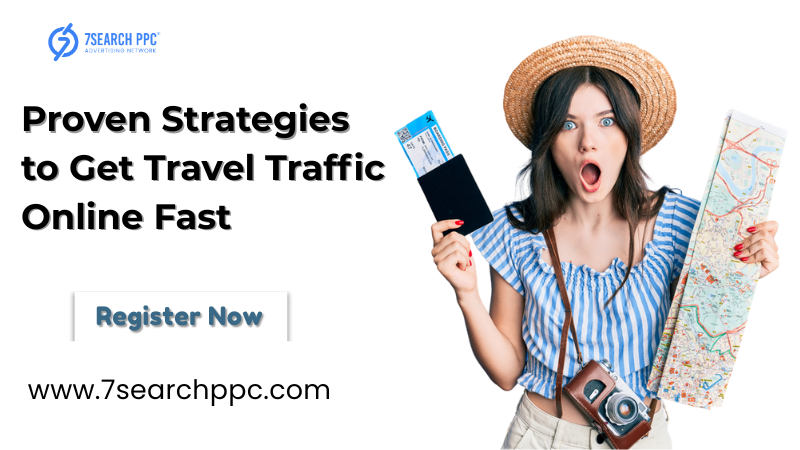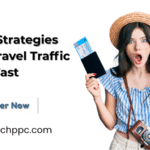The travel industry continues to evolve rapidly, and with the increasing digitization of marketing, promoting a travel business in 2025 requires a smart blend of creativity, strategy, and technology. Whether you are starting a small tour agency, launching a travel blog, or offering travel packages, visibility is key. This article explores proven methods to promote travel business effectively for beginners while integrating modern travel advertising strategies that align with today’s digital landscape.

Understanding the Foundation of Travel Marketing
Travel businesses are inherently experience-based. Unlike physical products, you’re selling an emotion, a vision, and a promise of adventure. To promote a travel business successfully, the focus must be on creating compelling narratives, inspiring visuals, and well-placed advertisements. Traditional methods such as brochures and local print ads still have a place, but digital platforms are now at the core of all successful marketing strategies. The competition is fierce, and standing out requires authenticity, targeted advertising, and consistency across all channels.
Leveraging the Power of Travel Advertising in 2025
Travel advertising has undergone a transformation over the past decade. In 2025, successful advertising strategies focus on personalization and automation, often powered by artificial intelligence and machine learning. These technologies help travel marketers segment audiences, retarget potential customers, and optimize ad performance in real-time.
Investing in travel advertisement networks that specialize in the travel and tourism niche offers a powerful advantage. These platforms connect businesses with high-intent travelers, placing your ads where they are most likely to be noticed—on travel planning websites, blogs, and booking platforms. Companies like Expedia, TripAdvisor, and niche platforms now offer self-service ad solutions, giving even beginner businesses the chance to get visibility with a small budget.
Developing a Digital Presence for Long-Term Growth
Building a High-Converting Website
Your website is the digital storefront of your travel business. It must be fast, mobile-friendly, and easy to navigate. A good travel website should include detailed itineraries, high-quality photos, testimonials, and easy contact or booking options. Integrating a blog section helps with SEO and allows you to share valuable content, such as travel tips or destination guides, which organically draws visitors.
The goal of the website is not just to inform, but also to convert. Each page should guide the visitor toward a specific action—subscribing to a newsletter, making a booking, or requesting more information. SEO optimization is essential; include your primary keyword “promote travel business” and secondary keywords like “travel advertising” and “travel advertisement network” throughout your content to improve visibility on search engines.
Embracing Social Media Marketing
Social media platforms remain indispensable tools for travel promotion. Instagram, Facebook, TikTok, and Pinterest are ideal for showcasing exotic destinations, happy clients, and behind-the-scenes travel stories. In 2025, short-form videos dominate engagement. Travelers often discover destinations through trending Reels or TikToks before researching further.
Consistency and authenticity are key. Rather than posting only polished images, share real experiences, customer testimonials, and live interactions. Use geotags and hashtags to increase discoverability, and collaborate with micro-influencers in the travel niche. These influencers often have niche followings with high engagement, making them ideal partners for advertising on travel sites and social platforms alike.
Using Paid Advertising to Boost Visibility
Understanding Travel Advertisement Networks
Paid advertising is the fastest way to get your business in front of a targeted audience. In 2025, travel advertisement networks have become increasingly sophisticated, allowing travel businesses to reach highly relevant segments based on user behavior, interests, and travel intent. Platforms such as Google Ads, Facebook Ads, and dedicated travel ad networks enable precise targeting and performance tracking.
Programmatic advertising, powered by AI, now plays a significant role in automated media buying. These systems learn which ads perform best and adjust campaigns accordingly. For beginners, starting with small, well-targeted campaigns allows you to learn without spending heavily. As you understand which platforms and messages work best, you can scale up confidently.
Advertising on Travel Sites with High Intent Traffic
Some of the best places to advertise a travel business are on websites where travelers are already planning trips. Advertising on travel sites like Booking.com, Kayak, Lonely Planet, and niche blogs provides access to audiences with a strong intent to book. Many of these platforms offer banner ads, sponsored content, and listing opportunities.
These partnerships don’t just provide traffic—they build trust. When your business appears alongside well-established names in the industry, it enhances credibility. Native ads and sponsored blog content are especially effective when tailored to the tone and style of the hosting site.
Creating Effective Travel Advertising Examples
To understand what works, it helps to look at travel advertising examples that have succeeded in recent years. The most effective ads are emotionally driven, highly visual, and focused on specific outcomes. For instance, an ad campaign promoting romantic getaways in Tuscany might highlight “Sunsets in the Vineyards” or “Private Villa Escapes,” paired with cinematic video footage and testimonials.
In 2025, personalization is key. Instead of generic advertisements, focus on creating ad variations for different customer personas—families, solo travelers, honeymooners, or adventure seekers. Each should feel like it’s speaking directly to the user. Use storytelling techniques to evoke emotion and urgency.
Another successful tactic is retargeting. If a user visits your site but doesn’t book, retarget them with ads reminding them of their favorite destination or offering a discount. Dynamic ads can show the exact itinerary or tour package they viewed earlier, improving the chances of conversion.
Creating Valuable Partnerships and Offline Strategies
While digital marketing takes center stage, offline strategies still hold value, especially for local or regional travel businesses. Partnering with local hotels, restaurants, and transportation companies can create referral networks that benefit all involved. Co-branded brochures, joint events, and shared digital campaigns help build community visibility.
Exhibiting at travel expos and fairs remains a viable option, particularly when targeting older demographics who still value in-person interactions. These venues provide opportunities to showcase your services, distribute promotional materials, and generate leads through direct engagement.
Create Your Campaign & Get Results!
Conclusion
Promoting a travel business as a beginner in 2025 may seem overwhelming, but with the right strategies, it becomes a highly rewarding venture. By understanding the evolving landscape of travel advertising, utilizing both digital and traditional tactics, and creating personalized, emotionally resonant content, you can reach and inspire potential travelers around the world.
Investing in a reliable travel advertisement network, maintaining a strong social media presence, and consistently producing high-quality content ensures you stay ahead of the competition. From advertising on travel sites to learning from successful travel advertising examples, the key is to remain flexible and focused on your audience’s desires. With a blend of creativity, data-driven decisions, and passion for travel, your business can thrive in today’s competitive market.






